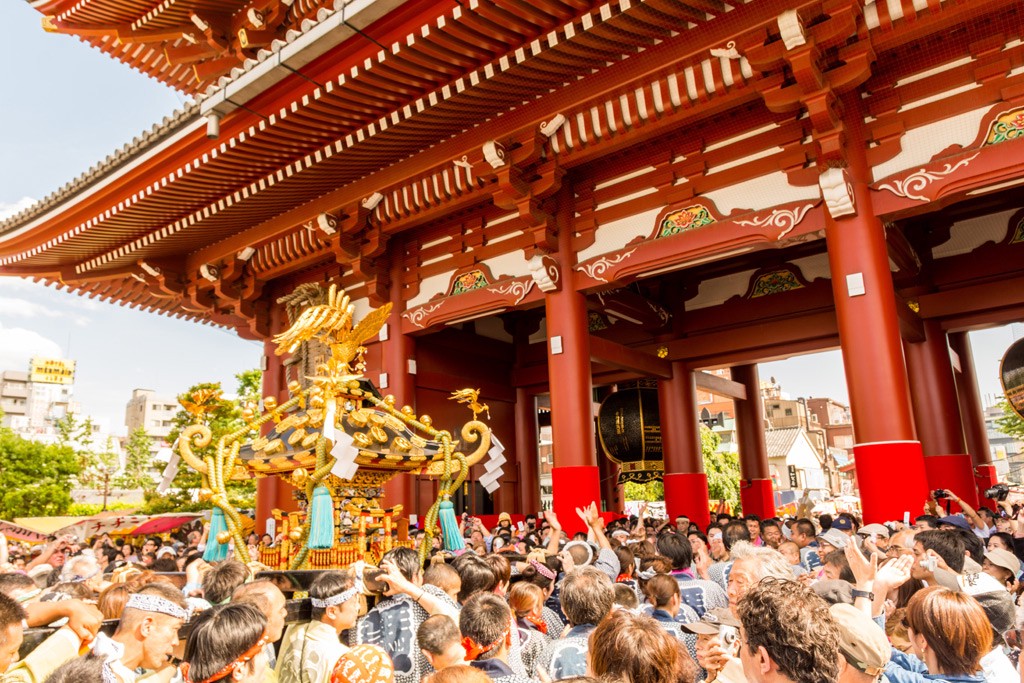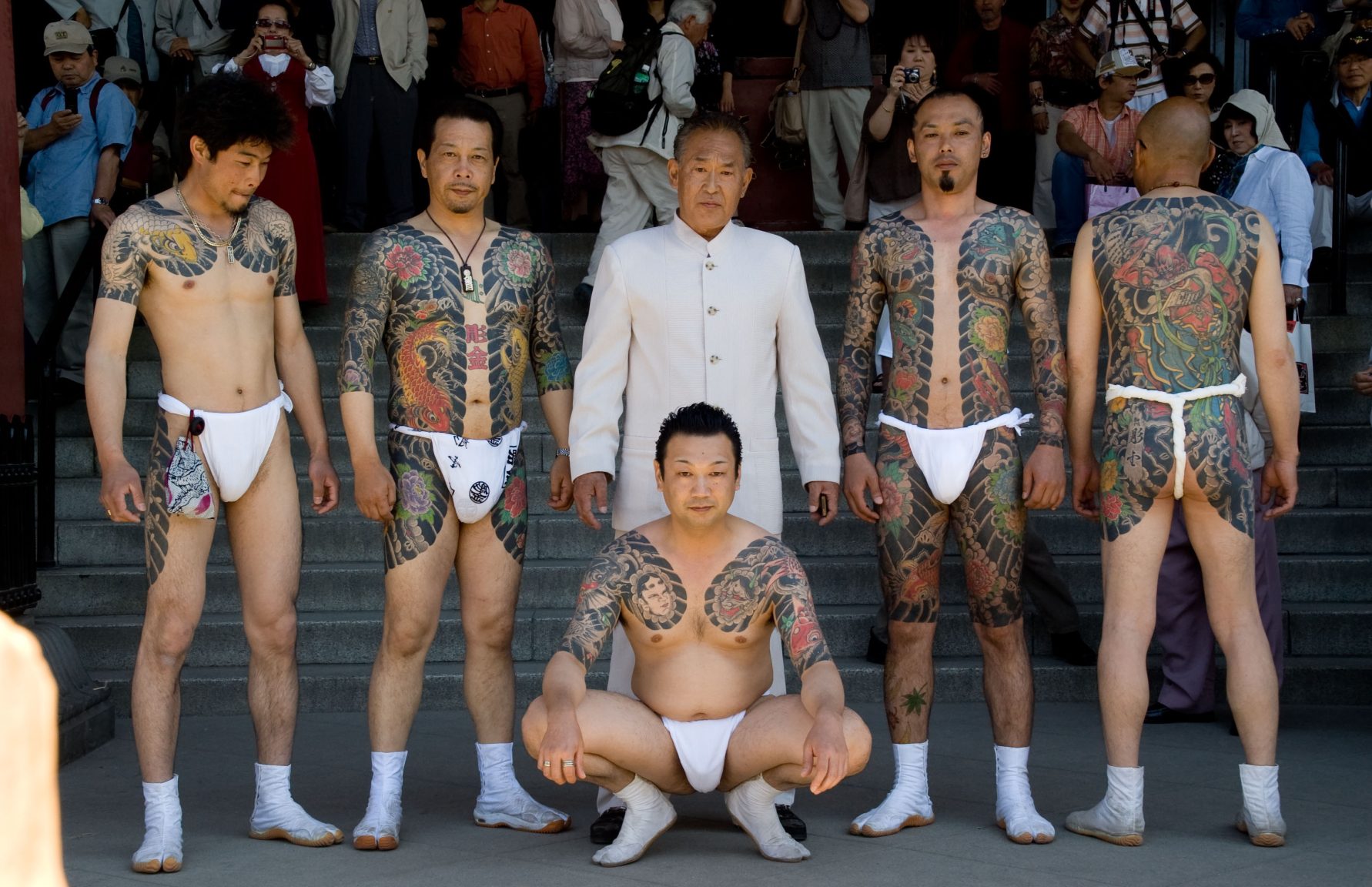Sanja Matsuri 2026: Tokyo’s Biggest Festival
Sanja Matsuri: Join the biggest and wildest festival in Tokyo!!

Every May, Tokyo’s Asakusa district bursts into a whirlwind of tradition and celebration during the Sanja Matsuri. This three-day festival, held from May 15 to 17 in 2026, honors the founders of Sensoji Temple and draws nearly two million visitors with its dynamic parades, traditional performances, and communal spirit.
The festival’s origins date back to the 7th century, commemorating the discovery of a Kannon Bodhisattva statue by two fishermen in the Sumida River. Their story, intertwined with that of a local landlord, led to the establishment of Sensoji, Tokyo’s oldest temple. Over time, the Sanja Matsuri evolved into a grand celebration, featuring the procession of mikoshi (portable shrines) through the streets, symbolizing the sharing of blessings with the community.
Keep reading to find out everything you need to know about one of Tokyo’s greatest festivals!
For a general overview of the Asakusa area, check out our All-in-One Guide to Asakusa.
What is Sanja Matsuri?
Sanja Matsuri (三社祭) or Sanja Festival is one of the three great Shinto festivals in Tokyo, held annually for 3 days on the third weekend of May in Asakusa Shrine. The festival is held in honor of the three men who founded Senso-ji Temple, Tokyo’s oldest Buddhist temple.
Sanja Matsuri is considered one of the wildest and largest festivals in Tokyo, which welcomes over 2 million visitors in 3 days.

The festival begins on Friday afternoon with the Daigyoretsu parade, with a large procession of priests, geisha, musicians and dancers with Edo Period costumes through the neighbourhood of Asakusa.
The festival gets bigger and bigger day by day. On Saturday, it features a parade carrying over 100 mikoshi (portable shrines) along with traditional music and dance from Senso-ji Temple and Asakusa Shrine to their neighbourhoods. The teams complete each other to be more energetic than others. On the final day of the festival on Sunday, three large-sized main mikoshi join the parade. Each mikoshi weighs approximately one ton and costs 40 million yen to construct.
Historical and Cultural Roots of Sanja Matsuri

Sanja Matsuri traces its origins to the early Edo period, honoring Hinokuma Hamanari, Hinokuma Takenari, and Hajino Nakatomo, three men credited with founding Sensoji. According to legend, the Hinokuma brothers discovered a statue of the Bodhisattva Kannon in the Sumida River in 628 AD. Moved by its significance, they converted to Buddhism under the guidance of Nakatomo, who became the first chief priest of what would become a major religious institution.
The festival is a neighborhood ritual deeply embedded in Asakusa’s identity. Each year, residents from dozens of local districts participate in carrying portable shrines, or mikoshi, through the streets to symbolically share the divine spirit of Kannon with the community. The act reinforces bonds between neighbors and reflects the strength of Asakusa’s traditional, working-class culture.
What To See & Do at the Sanja Matsuri

Sanja Matsuri attracts approximately 1.5 to 2 million visitors over three days, who come to witness its vibrant parades, traditional performances, and community celebrations. Plan in advance and be prepared for huge crowds!
Key Events and Unique Aspects
-
Daigyoretsu Parade (Friday, 1:00 PM): The festival kicks off with a grand procession featuring participants in traditional Edo-period attire, including heron-hooded dancers, geisha, and city officials. The parade moves along Yanagi Street and Nakamise-dōri, setting a festive tone for the weekend.
-
Binzasara Dance (Friday, 2:20 PM & 3:00 PM): This traditional dance, performed at Asakusa Shrine’s Haiden and Kaguraden, is a prayer for prosperity and a good harvest.
-
Local Mikoshi Processions (Saturday, 12:30 PM): Approximately 100 portable shrines (mikoshi) from Asakusa’s 44 districts are paraded through the streets. Some mikoshi are carried exclusively by women or children, showcasing community involvement.

-
Main Mikoshi Processions (Sunday, 6:00 AM – 8:00 PM): The festival’s highlight involves three large mikoshi from Asakusa Shrine touring the district. Each mikoshi, weighing about one ton and adorned with gold leaf, is carried by teams of approximately 40 people, who energetically shake them to amplify the kami’s power and bestow good fortune.
-
Geisha Performances (Saturday & Sunday, 1:00 PM – 3:00 PM): Geisha from Asakusa’s traditional district perform dances at the Asakusa Kenban. These ticketed events offer a rare glimpse into this refined art form.
-
Taiko Drum Performances (Sunday Afternoon): Members of the Nihon Taiko Dojo present a free half-hour traditional music show at Asakusa Shrine, adding rhythmic energy to the festivities.

-
Yakuza Tattoo Displays: Members of the yakuza often participate in the festival, proudly displaying their elaborate tattoos while wearing traditional fundoshi. This is a very rare public appearance, so this festival is a great opportunity into a unique cultural insight.
Practical Tips for Visitors
-
Arrival Time: To secure a good viewing spot, especially for the main mikoshi processions on Sunday, arrive early in the morning.
-
Attire: Wear comfortable clothing and footwear suitable for navigating crowded streets.
-
Hydration and Snacks: Stay hydrated and enjoy the variety of street food available along Nakamise Street and surrounding areas.
-
Photography: Be respectful when taking photos, especially during religious ceremonies and performances.
-
Accommodation: Book lodging well in advance, as hotels in Asakusa and nearby areas fill up quickly during the festival weekend.
How to Get to Sanja Matsuri
The festival takes place in Tokyo’s Asakusa district, centered around Asakusa Shrine and the adjacent Sensoji Temple.
Nearest stations
-
Asakusa Station:
-
Tokyo Metro Ginza Line: Direct access to Asakusa’s main attractions.
-
Toei Asakusa Line: Connects to other major lines across Tokyo.
-
Tobu Skytree Line: Convenient for travelers coming from the suburbs.
-
-
Asakusa Station (Tsukuba Express Line): Approximately a 10-minute walk to Asakusa Shrine.
Alternative Nearby Stations
To avoid the heavy crowds at Asakusa Station during the festival, you should probably consider these nearby stations:
-
Tawaramachi Station (Tokyo Metro Ginza Line): About a 10-minute walk to the festival area.
-
Kuramae Station (Toei Asakusa Line): Approximately a 15-minute walk to Asakusa Shrine.
-
Honjo-Azumabashi Station (Toei Asakusa Line): Roughly a 15-minute walk to the festival grounds.
For more information about traditional festivals in Japan, please check out these links, too!!
Written by
"The world is my oyster." As a dedicated globetrotter and hammock enthusiast, I’ve spent years chasing new experiences, collecting stories, and discovering the world’s most incredible destinations. Born and raised in Japan, I’ve always had a deep connection to my roots, but my love for adventure has led me to spend over a decade exploring countries across the globe—from culture-rich cities to remote hideaways.
Travel isn't just a hobby for me; it's a lifestyle. I'm constantly searching for new ways to fuel my wanderlust. Over the years, I’ve developed a wealth of knowledge and a treasure trove of tips that make traveling more enjoyable, practical, and meaningful.
Through my experiences, I've come to appreciate not only the beauty of travel but also the importance of understanding diverse cultures, embracing the unfamiliar, and stepping out of my comfort zone. My travels have shaped who I am today, and I’m excited to share those lessons with others.
With Japan Web Magazine, I aim to offer practical advice, insider tips, and firsthand stories that help travelers navigate their journeys to Japan or setting off on a global adventure. From hidden gems in Japan to travel hacks that make any trip smoother, I hope my insights inspire you to embark on your own adventures and make the most of every moment. Let’s explore the world together!
You can also find my stories here ▶ https://medium.com/@nahobm








